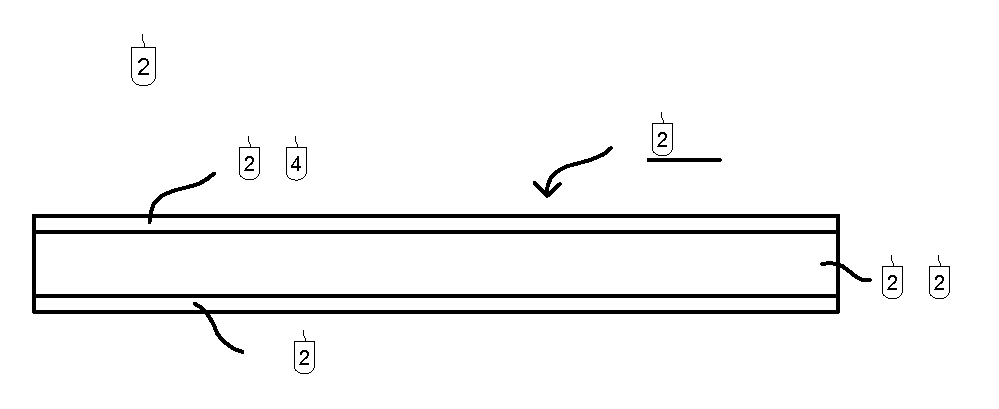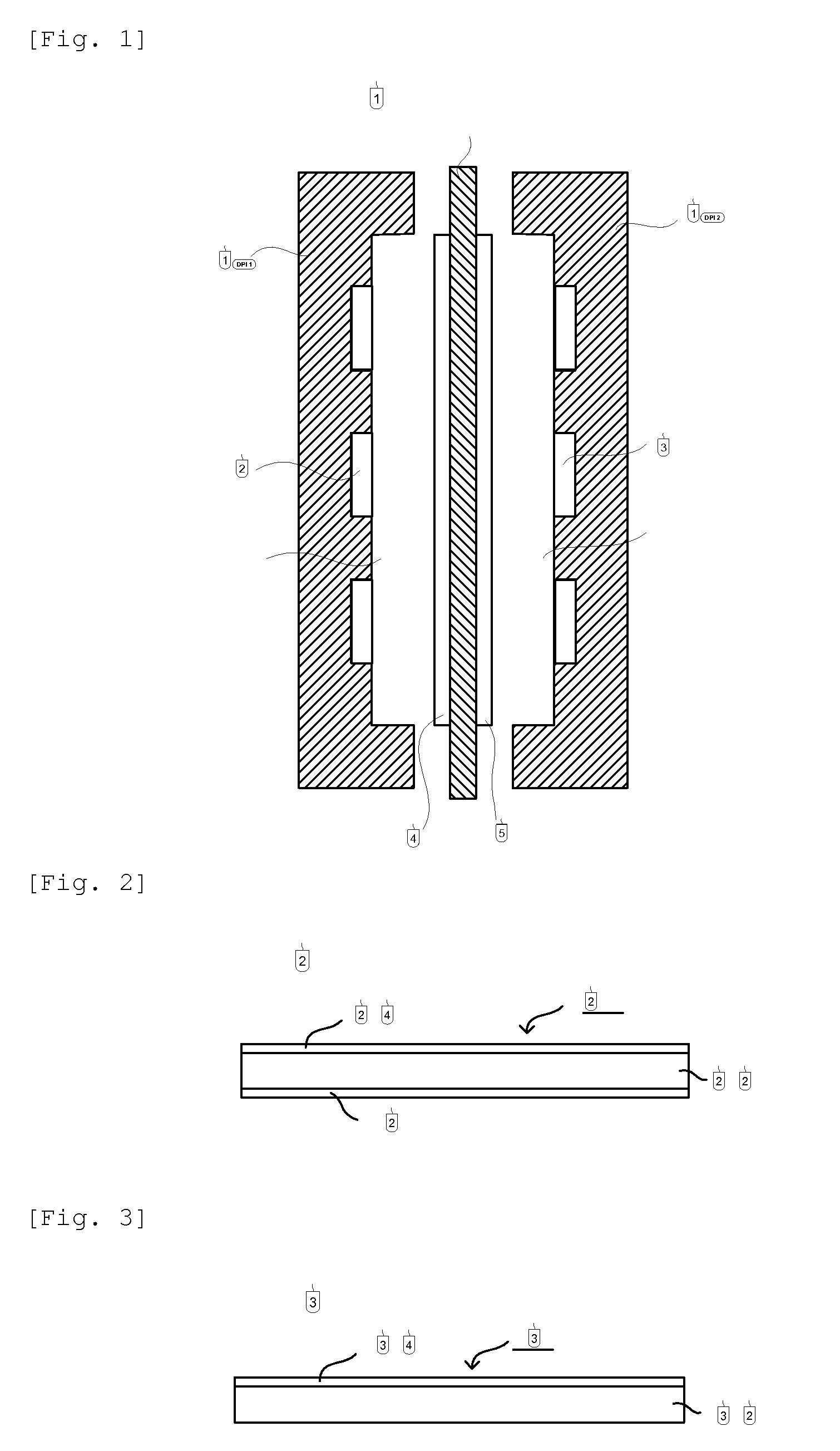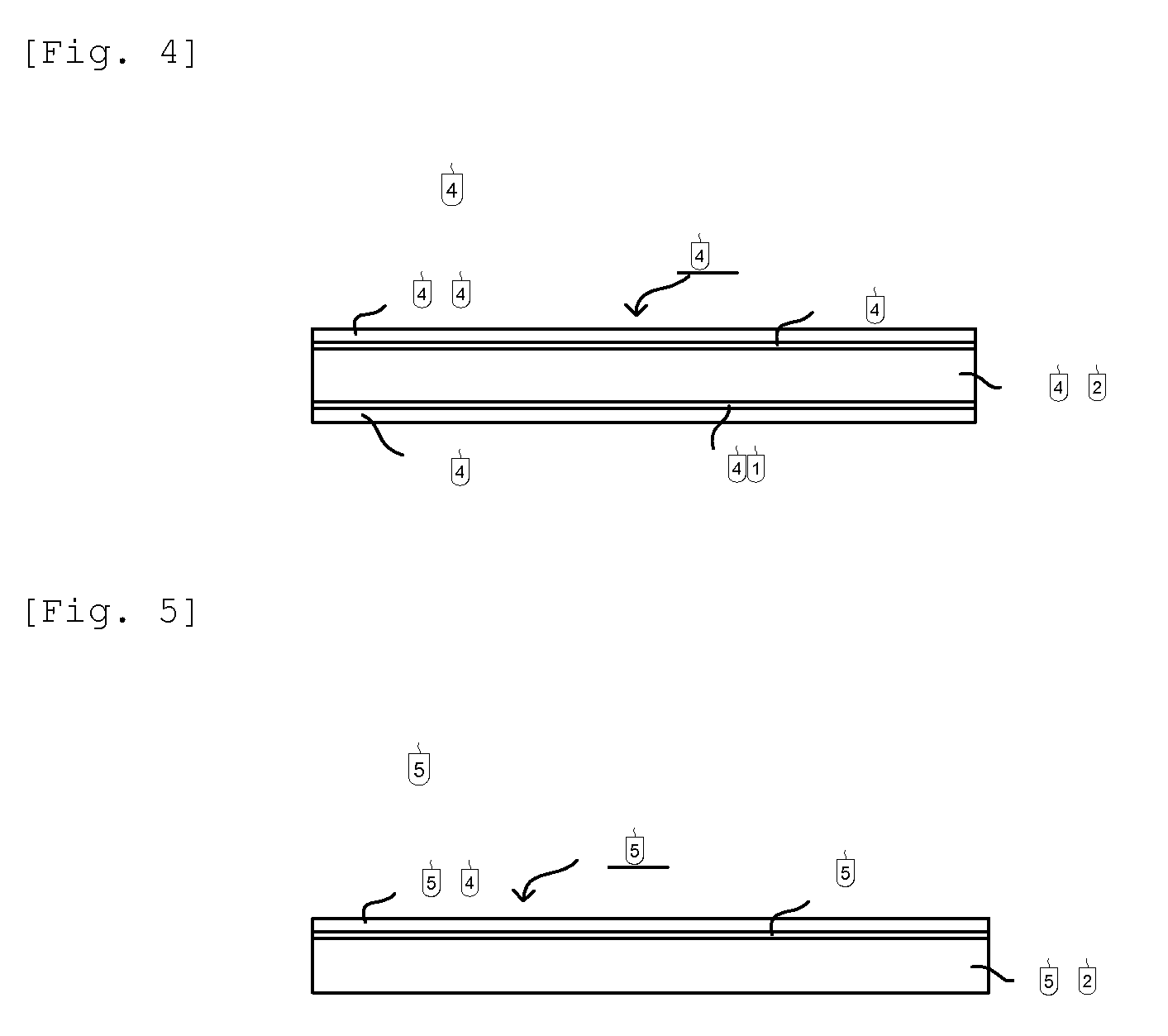Separation membrane for solid polymer fuel cell and separation membrane-catalyst electrode assembly
a fuel cell and membrane technology, applied in the direction of cell components, electrochemical generators, electrolytes, etc., can solve the problems of difficult to reduce the electrical resistance of the resin membrane, high cost of perfluorocarbonsulfonic acid resin membrane, and limit in cost reduction, etc., to achieve high hydroxide ion conductivity, high mechanical strength, and high non-permeability to fuel
- Summary
- Abstract
- Description
- Claims
- Application Information
AI Technical Summary
Benefits of technology
Problems solved by technology
Method used
Image
Examples
first embodiment
of Membrane
[0047]In FIG. 2 is shown a constitution of the membrane for polymer electrolyte fuel cell, of the first embodiment of the present invention (hereinafter, this membrane may be referred to simply as membrane for cell). In FIG. 2, 200 is a membrane for polymer electrolyte fuel cell, wherein adhesive layers 204 and 206 are formed on both sides of a hydrocarbon anion-exchange resin membrane 202.
[0048]In FIG. 3 is shown other constitution of the membrane for polymer electrolyte fuel cell, of the present invention. In FIG. 3, 300 is a membrane for fuel cell, wherein an adhesive layer 304 is formed only on one side of a hydrocarbon anion-exchange resin membrane 302.
Hydrocarbon Anion-Exchange Resin Membrane
[0049]As the hydrocarbon anion-exchange resin membranes 202 and 302, any known hydrocarbon anion-exchange resin membrane can be used with no restriction. As the anion-exchange group, there can be mentioned, for example, primary to tertiary amino groups, quaternary ammonium salt ...
second embodiment
of Membrane
[0126]In FIG. 4 is shown an example of constitution of the second embodiment of the membrane for polymer electrolyte fuel cell, of the present invention.
[0127]In FIG. 4, 400 is a membrane for polymer electrolyte fuel cell, wherein intermediate layers 408 and 410 are formed on both sides of a hydrocarbon anion-exchange resin membrane 402 and adhesive layers 404 and 406 are formed on the surfaces of intermediate layers 408 and 410. That is, the intermediate layers 408 and 410 are formed between the hydrocarbon anion-exchange resin membrane 402 and the adhesive layers 404 and 406.
[0128]FIG. 5 shows other constitution of the second embodiment of the membrane for polymer electrolyte fuel cell, of the present invention. In FIG. 5, 500 is a membrane, in which an adhesive layer 504 is formed only at one side of a hydrocarbon anion-exchange resin membrane 502 and an intermediate layer 508 is formed between the anion-exchange resin membrane 502 and the adhesive layer 504.
[0129]In t...
production example 1
[0218]There was prepared a monomers composition consisting of 100 mass parts of chloromethylstyrene, 3 mass parts (3.5 mol % of the total polymerizable monomers) of divinylbenzene, mass parts of a polyethylene glycol diepoxide (molecular weight: 400) and 5 mass parts of tert-butyl peroxyethylhexanoate. In this monomers composition was immersed, at 25° C. for 10 minutes under atmospheric pressure, a porous membrane (thickness: 25 μm, porosity: 37%, average pore diameter: 0.03 μm) made of a polyethylene (PE, weight-average molecular weight: 250,000) to infiltrate the monomers composition into the porous membrane.
[0219]Successively, the porous membrane was taken out from the monomers composition and covered, at the both sides, with a polyester film (a peeling material) of 100 μm in thickness. Then, the covered porous membrane was heated at a nitrogen pressure of 0.3 MPa at 80° C. for 5 hours to polymerize the infiltrated monomers composition.
[0220]The membrane-shaped material obtained ...
PUM
| Property | Measurement | Unit |
|---|---|---|
| Young's modulus | aaaaa | aaaaa |
| pore diameter | aaaaa | aaaaa |
| pore diameter | aaaaa | aaaaa |
Abstract
Description
Claims
Application Information
 Login to View More
Login to View More - R&D
- Intellectual Property
- Life Sciences
- Materials
- Tech Scout
- Unparalleled Data Quality
- Higher Quality Content
- 60% Fewer Hallucinations
Browse by: Latest US Patents, China's latest patents, Technical Efficacy Thesaurus, Application Domain, Technology Topic, Popular Technical Reports.
© 2025 PatSnap. All rights reserved.Legal|Privacy policy|Modern Slavery Act Transparency Statement|Sitemap|About US| Contact US: help@patsnap.com



